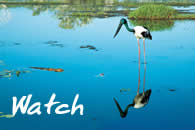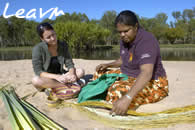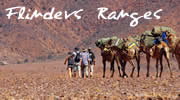Kakadu & Arnhem Land, Northern Territory
Three hours drive east of Darwin is the famed, World Heritage-listed Kakadu National Park - a spectacular collection of woodlands, forests, the majestic Arnhem Land escarpment, Waterways and floodplains, all home to an incredible array of wildlife.
Kakadu is one of only 22 World Heritage sites listed for both its natural and cultural heritage. The wide ranging habitats, from arid sandstone hills, savannah woodlands and monsoon forests to freshwater flood plains and tidal mudflats, support an immense variety of wildlife, some rare or endangered. There are over 50 species of mammal, including kangaroos, wallabies, quolls, bandicoots, bats and dugong. More than 120 reptile species include saltwater and freshwater crocodiles, goannas and turtles. A quarter of the country’s freshwater fish species inhabit the park’s river systems. The park is home to over one-third of Australia’s bird species, including more than two million migratory birds such as magpie geese and whistling ducks. Rare bird species include the hooded parrot and the Gouldian finch, the chestnut-quilled rock pigeon and white-throated grass wren are endemic to Kakadu and Arnhem Land.
It is Australia's largest national park, but it isn't just the size that astounds visitors - it is the sense of something very old and grand. Creation of the 500 km escarpment began 2,000 million years ago, when layers of sandstone built up a plateau to later be carved into an escarpment and scoured by gorges. Today those gorges are brimming with rainforests, washed by waterfalls.
One thousand species of flora, 30 mammals, 75 reptiles, 1500 butterflies and moths, 50 freshwater fish and 25 species of frog have been discovered in Kakadu. During the lush green season Kakadu's flora puts on its most brilliant face. Between December and March visitors will see plants respond to the monsoonal showers with riotous growth.
Over thousands of years, Aboriginal people have left behind some extraordinary galleries of Aboriginal art, with rock sites dating back 25,000 years. More than 1,000 sites have been recorded.
Average Climate for Kakadu Region
|
Jan |
Feb |
Mar |
Apr |
May |
Jun |
Jul |
Aug |
Sep |
Oct |
Nov |
Dec |
| Min C |
25 |
24 |
24 |
24 |
22 |
19 |
18 |
19 |
21 |
24 |
25 |
25 |
| Max C |
34 |
33 |
33 |
35 |
33 |
32 |
32 |
34 |
36 |
38 |
37 |
35 |
| Rain mm |
347 |
332 |
318 |
66 |
11 |
1 |
3 |
4 |
9 |
27 |
158 |
211 |
(all photo's courtesy of Tourism NT)















